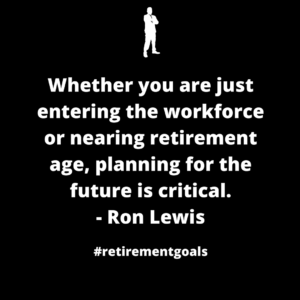Monday, February 5, 2018
Understanding Your RRSP’s
As we roll into February, those frequent blizzards mean tax time is now approaching. With tax time brings the annual Registered Retirement Savings Plan or RRSP season. Many of you are getting or giving calls to your financial advisor to make your annual contribution. Others have been contributing all year and are just awaiting that juicy tax return. For many more, who still don’t have an RRSP, understanding the benefits of the plan becomes important. This week at Budget Boss is aimed at doing just that. I am going to tackle many RRSP relating topics, but today I will start off with the basics. The RRSP is still Canada’s most widely used investment vehicle and there is good reason for that. For decades Canadians have been saving in their RRSP’s, hoping for the big day they can call it quits. Today, let’s look at the RRSP and give you the fundamentals of this amazing savings plan. If you plan on retiring comfortably, it is still a great vehicle for your future savings goals.
What is it for?
The obvious answer is retirement. To me, the RRSP is for much more than that though. It is designed to get you saving for the future by giving you benefits right away, which we will go into later in the post. I believe the RRSP is meant to be a supplement to the government benefits we receive in retirement. Many of us are unaware how much we will receive from the government when we retire. Just a heads up, it’s not much. (Around 20K maximum, and only if we qualify, which many of us don’t). The RRSP is also for reducing our taxable earnings to get us a nice return every year. It helps younger people go back to school or buy their first home. It is also an educational tool as to the importance of planning for the future and how investments work.
How much can you contribute?
Anyone who files an income tax return and has an earned income can open and contribute to an RRSP. There are limits to what you can contribute, however. The maximum you can contribute to your RRSP is the lesser of either:
18% of your earned income for the year or
$26,010 for the 2017 tax year, maximum yearly contribution
The reason there is a limit to what you can contribute is that there are benefits to putting money in your RRSP, so having limits becomes necessary or the ultra-wealthy would maximize these benefits and pay far less tax. We must also remember that your employer’s contributions to your RRSP can take up part of your contribution limit. This makes it important to understand what is offered to you at work.
The savvy investor’s guide to RRSPs – MoneySense
What happens to the money in the account?
The RRSP is an investment vehicle, meaning it holds investments of your choice. It is the shelter for which your investments can grow. The money within your RRSP can be invested in many different things such as:
Cash
Gold and silver bars
GICs
Savings bonds
Treasury bills (T-bills)
Bonds (including government bonds, corporate bonds, and strip bonds)
Mutual funds (only RRSP-eligible ones)
ETFs
Equities (both Canadian and foreign stocks)
Canadian mortgages
Mortgage-backed securities, and
Income Trusts
Having your money in your RRSP invested in one or more of these investments can make it grow. Over time your money can grow to much more than what you put into it. This makes it very attractive to those who want to have their money working for them. This becomes especially attractive when you add longer time horizons and the effect of compound interest. The most popular investments that Canadian’s utilize in their RRSP’s have been Mutual Fund’s, Bonds, GIC’s, ETF’s and Equities. Any investment can be useful for you if it matches your risk tolerance and time horizon. If you are confused as to what you should be invested in, speak with a licensed financial advisor for clarification.
10 Tips for Investing in the Market – Budget Boss

Tax Implications
There are 3 distinct tax advantages to an RRSP.
1) Tax-deductible contributions
You get immediate tax relief by deducting your RRSP contributions from your taxable income each year. Your contributions are said to be made with “Pre-Tax” dollars which means that you have annual savings if you make annual contributions.
Example: You Earn $50,000 for the 2017 year and therefore you will be taxed fully on that 50K. If you contribute the maximum on your RRSP for 2017 ($9,000 = 50K x 18%), you will only be taxed on $41,000, thus lowering the amount of taxes you pay on the year. If you have already paid the taxes through instant payroll deductions, which the majority have, then you will receive a better tax return when you settle your taxes for the year.
2) Tax-sheltered growth
Money within your RRSP can grow sheltered from tax. What this means is that any growth in your money from the investments you choose does not result in extra taxable earnings for you each year. If the money stays within the RRSP, it can grow as much as your investment choices dictate, and no tax will be paid on that growth. This is not the case with non-registered investments as they fall into the realm of capital gains tax.
3) Tax-deferral
You will, however, pay tax when you withdraw money from the RRSP. This is because you skipped the tax when you put it in, see point number 1. This is on both contributions and investment growth. The value of this system is that you will more than likely be in a lower tax bracket when you are retired and therefore more than likely pay less tax upon withdrawal.
These 3 tax features make the RRSP very attractive to those wishing to save for the future and receive benefits right now. Many complain of the tax upon withdrawal, stating it as a reason they dislike RRSP’s. I must re-iterate that this tax paid upon withdrawal is only because the tax was never paid to begin within. It will be saved every year come tax time and theoretically, less will be paid when you begin withdrawals in retirement.
The five biggest RRSP myths that Canadians can’t stop repeating – The Financial Post
Overview
I believe that everyone should have an RRSP. It just depends on when is the right time for opening it. I can break my approval for the RRSP down to several key points:
- Immediate tax savings in the form of annual deductions
- Growth is saved from taxes as well
- Tax is paid at lower rate once withdrawn
- You save and plan for your future
To me, point number 4 is the most important. It is this habit of foresight and dedication that will allow you to prosper in retirement. All the other benefits are just the icing on the cake. During this RRSP season make sure you do your best to contribute the maximum. If you have not yet opened an account, speak with an advisor to see if opening an RRSP would be right for you.
Thanks for tuning in today as we begin RRSP Week here at Budget Boss. Tune in tomorrow as I go over what investments you can put into your RRSP. If you would like to speak with someone regarding opening an RRSP, please do not hesitate to contact me at joe@budgetboss.ca. Have a great day Bosses!
“Whether you are just entering the workforce or nearing retirement age, planning for the future is critical.” – Ron Lewis

Email – joe@budgetboss.ca
Follow Budget Boss on – Facebook LinkedIn Twitter Instagram Pinterest Quora

